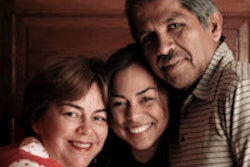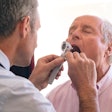
Cancer rates among U.S. Hispanics vary according to their families' country of origin, according to two new studies, pointing to the need for increased education to prevent a potential spike in the incidence of cancer, including oral cancer, in some Hispanic populations.
Holly Howe, Ph.D., led an ambitious national study that used a new method to estimate cancer rates from 1995 to 2004 among Hispanics who have been in the U.S. for at least one generation and whose forebears came from Mexico, Puerto Rico, or Cuba (Cancer Causes and Control, September 2009, Vol. 20:7, pp. 1215-1226). The investigators found that rates of most cancers are lower in Hispanics than whites but that several, such as those of the oral cavity, are higher in some Hispanic groups.
— Kishore Shetty, D.D.S., M.S.,
University of Colorado Denver
School of Dental Medicine
Paulo Pinheiro, M.D., Ph.D., M.Sc., a researcher in the department of epidemiology at the University of Miami Miller School of Medicine, led the other study (Cancer Epidemiology, Biomarkers & Prevention, August 2009, Vol. 18:8, pp. 2162-2169). He and his colleagues used data on incident cancer cases between 1999 and 2001 from the Florida cancer registry and data from the 2000 U.S. census. The team found that Puerto Rican immigrants had the highest overall cancer incidence rates, followed by Cubans and then Mexicans.
In their study, Dr. Howe and her three co-investigators used a two-pronged approach to arrive at estimates for cancer rates among Hispanic groups. They first determined what the majority Hispanic group was in each county, then assigned all cancer cases among Hispanics in that county to that Hispanic group.
The results revealed that Cubans had the highest overall cancer rate, at 516 cases per 100,000 person-years. Puerto Ricans came next, at 505 cases per 100,000 person-years, followed by Mexicans at 414 cases per 100,000 person-years.
Most cancers were present at significantly lower rates among Hispanics than those among U.S. whites. However, several types are found in higher rates among Cubans than among whites. The rate of cancers of the oral cavity and pharynx among non-Hispanic white males was 16.5 per 100,000 person-years, while it was 18.0 among Cuban men and 17.5 among Puerto Rican men. The rate among Mexican men was 9.6 per 100,000 person-years.
All groups of Hispanic women had lower rates of cancer of the oral cavity than did white women.
More education needed
Kishore Shetty, D.D.S., M.S., program director and general practice residency chair at the University of Colorado Denver School of Dental Medicine, has coauthored two papers on the oral cancer risk among adolescent Hispanic-Americans in southern Texas, almost all of whom are of Mexican origin (Journal of Dentistry for Children, July 2009, Vol. 76:2, pp. 142-148; January-April 2007, Vol. 74:1, pp. 62-66).
"The results show that, in the Mexican-American population -- which is the fastest-growing minority group in the U.S. -- the overall risk for oral cancer is especially high in males," Dr. Shetty wrote in an e-mail to DrBicuspid.com. "This is important because we are looking at acculturation effects in this population as they assimilate in the mainstream U.S. culture and adopt risky behaviors such as smoking, smokeless tobacco -- in the form of chewing tobacco or snuff -- and alcohol use. These risk factors are synergistic and hence will add to the incidence rates as this young population ages."
More health education and promotion should be directed toward minority populations, particularly in underprivileged areas, Dr. Shetty noted.
"Also there is aggressive advertising and marketing by tobacco companies at this segment of the population, which is sometimes ignored and not reported," he added.
Ross Kerr, D.D.S., M.D.S., a clinical associate professor in the department of oral medicine at the New York University College of Dentistry, agrees with the idea of increased education regarding oral cancer, both of clinicians and patients, as well as increased screening -- but among all minorities, not just Hispanics.
"I am an enormous advocate for oral cancer screening; all clinicians should be screening all patients for oral cancer," Dr. Kerr said. "But we shouldn't do it more for Hispanics than for, say, Asians because it depends on the individual's risk profile. And these data (from Dr. Howe) don't show that Hispanics have, say, double the oral cancer rates of whites."
Copyright © 2009 DrBicuspid.com



















